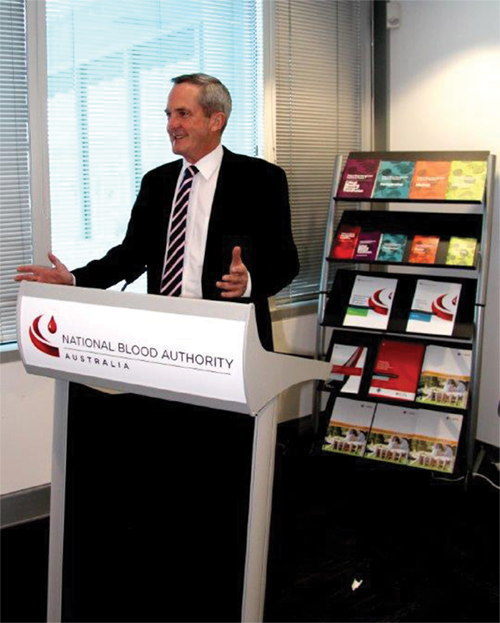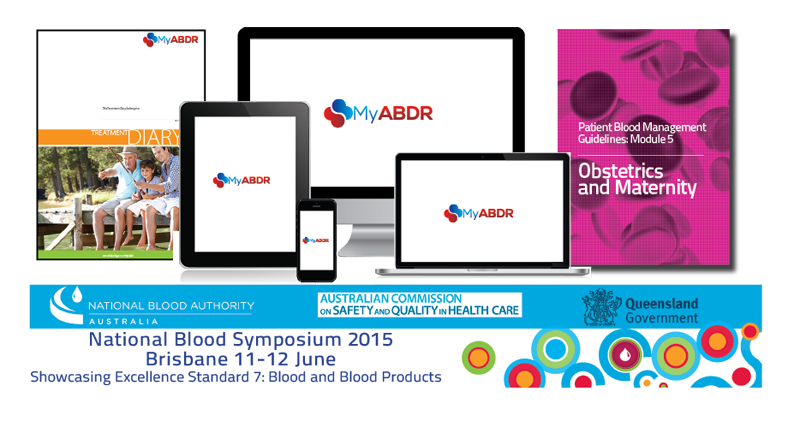General Manager's Review

Outcome delivery again characterised 2014-15 for the NBA. This financial year marks the end of a three year work programme assigned to the NBA by governments in the JBC Strategic Plan 2013-15. A reconciliation of achievements against the Plan confirms that 2014-15 was the culmination of a programme delivering achievements that met or exceeded almost all objectives and targets set. This included governments' priorities to:
- minimise wastage
- improve clinical use
- improve national information collection, management and analysis
- enhance the sustainability and security of supply arrangements, including improved value for money.
Ensuring supply
The NBA again delivered on its primary responsibility to ensure Australia has an adequate, safe, secure and affordable supply of blood and blood related products to meet clinical demand. The clinical demand for blood and blood related products in Australia was met without interruption and at a saving of $131.1 million. This saving brings the total amount of funding returned to governments over the last three years to $355.8 million.
There were a range of measures that contributed to the excellent supply budget outcome. Key amongst them was the further improvement in the appropriate use of fresh blood. The 2014 -15 demand for red cells decreased by 5 per cent and platelets decreased by close to 2 per cent. This result builds on the progress already made in this strategic planning cycle to bring the total reduction in red cell demand over the last three years to 18 per cent, realising significant improvements in patient outcomes and financial savings in excess of $78 million. This is in sharp contrast to general hospital activity which has increased by over 15 per cent in the same period.
Australian Red Cross Blood Service (Blood Service) improvements in supply performance and efficiency under the current NBA Deed of Agreement with the Australian Red Cross Society (Red Cross) also played a major role in the savings outcome. The Blood Service achieved a surplus of approximately $34 million and will return a 2014-15 saving of approximately $29 million to governments under the Output Based Funding Model (OBFM) agreed with the Blood Service. Performance management arrangements around service delivery were also significantly strengthened with the completion and agreement of Phase 1 of the National Service Requirements and Standards (NSRS). The NSRS set out the Blood Service's relationships with health providers and the NBA. This includes business rules and standards for ordering, delivery, and receipt of products.
In relation to commercial overseas supply operations, the NBA undertook a highly successful tender for imported Ig products that will realise annual savings of approximately $30 million per year from 1 January 2016. The new contracts achieved a world value for money benchmark that also embeds a number of improved supply performance provisions.
Security of supply
The NBA completed a range of actions that will further strengthen security of supply arrangements. The recommendations from an exhaustive Review of Risk Management in the Blood Sector were approved by all Health Ministers through the COAG Health Council. The Review concluded that the overall level of risk in the blood sector has reduced over the last decade due to a range of factors, including supply security improvements undertaken by the NBA. The recommendations approved by Ministers will further strengthen supply security and address some outstanding Red Cross concerns relating to risk exposure in negotiating a new Deed of Agreement.
The NBA completed a Supply Risk and Mitigation Project to review supply security arrangements for all plasma and recombinant products. This included the validation of existing stock and contractual supply reserves. In addition, the NBA completed a comprehensive revision of the National Blood Supply Contingency Plan to take into account a range of contingency management enhancements approved by the JBC in relation to a new annex dealing with the management of a shortage of supply of platelets. The new arrangements for the management of platelets were subject to a joint contingency exercise with the Blood Service in April 2015.
Implementing blood stewardship
The NBA continued its aggressive programme of activities supporting the implementation of the health ministers' Statement on national stewardship expectations for the supply of blood and blood products. The programme is targeted at health providers to contribute to the sustainability of the blood supply by improving the management and use of blood products. Significant 2014-15 outcomes included:
- the development and implementation of BloodNet-Laboratory Information System (LIS) interfaces at an individual health provider level. Over 24 per cent of volume issued by the Blood Service nationally is now processed through an automated LIS interface, improving efficiency and accuracy. The innovation in its development was recognised with the BloodNet LIS project receiving three awards in the ACT 2015 iAwards (see p.38)
- the publication of national PBM Guidelines Module 5 on Obstetrics and Maternity and development of Module 6 on Neonatal and Paediatrics for release early in 2016. The PBM Guidelines provide a key reference at health provider level and have underpinned the significant improvements in appropriate use of blood
- the development and implementation of a health provider Charter requiring a formal commitment at a CEO level to measures that improve the management and use of blood and blood products
- an intensive programme of engagement, education and awareness promotion targeting key health provider and clinical stakeholders including:
- the hosting of promotional stands and sponsored clinical presentations at a range of key clinical and sector conferences
- the highly successful joint sponsorship with the Australian Commission on Safety and Quality in Healthcare and Queensland Department of Health of a National Symposium supporting the implementation of the National Safety and Quality Healthcare Standard 7 dealing with blood and blood products (see Objective 3 p.47).

Outlook for 2015–16
2015-16 will be a busy year. It will see the culmination of key JBC approved work programmes in relation to the implementation of the PBM Guidelines, reduction of wastage, and ICT and data collection development. In addition, the NBA will finalise a number of significant projects that have been in development for an extended period, including negotiation of a new nine year Deed of Agreement with the Red Cross and implementation of the new national ICT system, BloodSTAR, to support improved Ig authorisation and governance arrangements. The NBA will also seek JBC approval of a proposal to fund research and development in priority areas. If approved, this will be a new and exciting initiative in the blood sector.
I close this report with a special acknowledgement of appreciation for the many stakeholders across the sector who gave generously of their time, professionalism and passion. The outcomes we delivered were made possible because of their commitment. We look forward to working again with them in 2015-16.

Leigh McJames
General Manager
National Blood Authority
